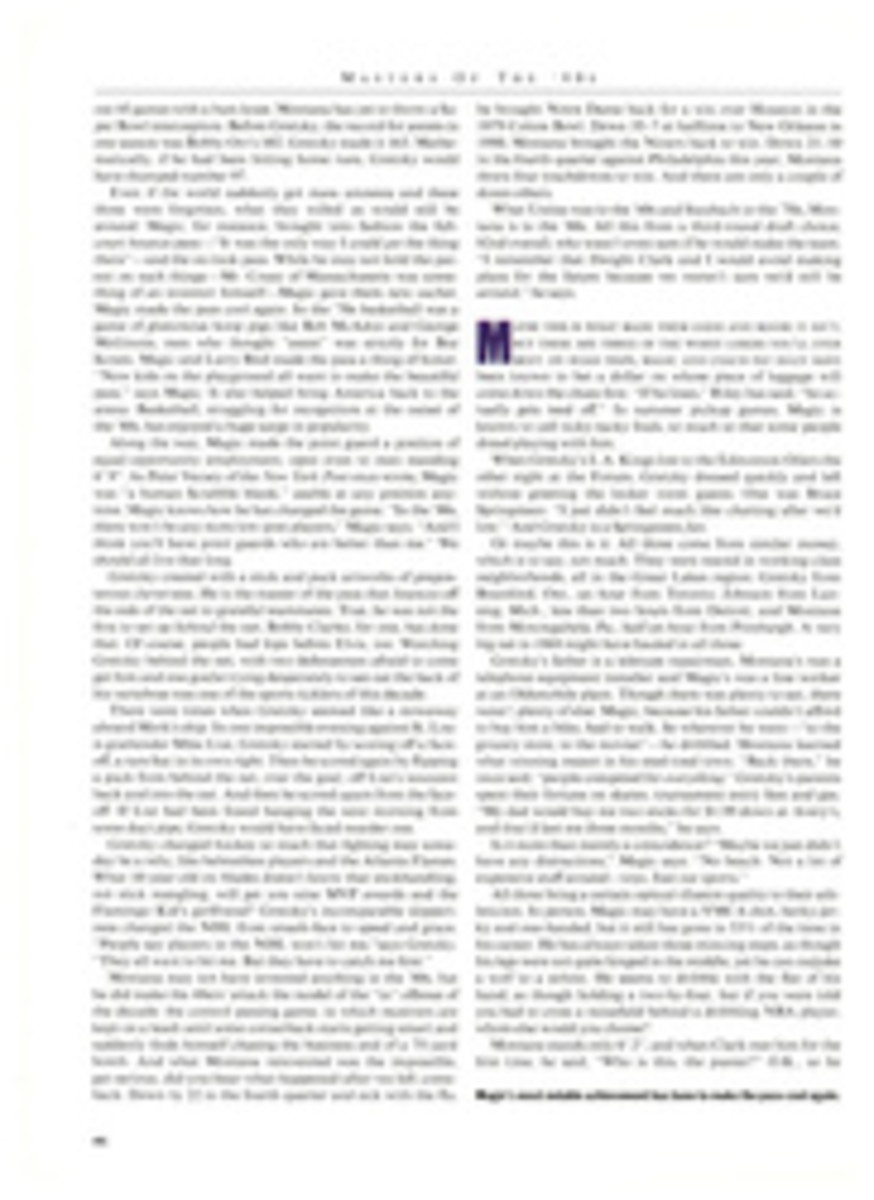
ATTEN-HUT, YOU SKIERS!
In 1943, a 128,000-acre section of the Colorado Rockies near what is now Vail practically belonged to the Phantoms of the Snow. It was wartime, and the Phantoms, or, more formally, the 10th Mountain Division, America's first unit of ski troops, trained for combat against the likes of German soldiers, who were accustomed to skiing the Alps.
The Phantoms were headquartered at Camp Hale, a stark, beautiful swath of mountain wilderness with an altitude (9,300 feet) and weather (average January temperature: 18°) that took some getting used to. But the training program was a success. In February 1945, the Phantoms scaled Riva Ridge in Italy's Apennine mountains and took Monte Belvedere from the Germans, breaking the so-called Gothic Line and effectively launching the U.S.'s spring offensive across the Apennines and into the Po River valley.
"Camp Hale made for a conditioning you'd never get any other place," says semiretired Colorado Springs lumberman William Boddington, a captain in the 10th. "When we hit 3,500 feet in Italy and we could still run, the Germans couldn't understand it."
Living at Camp Hale also produced an unusual sense of camaraderie among the soldiers, and after the war, 10th alumni played a significant role in building the American ski industry. But even as former ski troopers were developing Alpine resorts across the West—including Vail, Steamboat Springs and Aspen—they still felt a particular affinity for the backcountry skiing they had done as young soldiers.
A decade ago two cross-country skiing enthusiasts—Aspen architect Fritz Benedict, a 10th Mountain Division veteran, and his assistant, Elizabeth Holekamp Boyles—met with members of the U.S. Forest Service to propose the construction of a backcountry trail system extending from Vail to Aspen, with huts in which one could spend the night. The idea was that hardy cross-country skiers could spend days in the mountains, but instead of sleeping in a freezing tent or snow cave as the Phantoms had in training, the vacationers would bed down in comfortable huts. It was suggested that the trail be named in honor of the 10th Mountain Division.
The Forest Service wasn't convinced enough people would use the huts to justify building them on Forest Service land. Finally, Robert McNamara, the former secretary of defense who had been chairman of the World Bank and wanted to build a hut as a memorial to his wife, said, "If after five years the huts are not used as much as you feel they should be, I will have them removed [at my expense]."
Since 1982 eight huts have been built with private funds in honor of various people, including some 10th Mountain Division veterans. Three commercially operated huts were incorporated into the trail system as well. The 11 huts are situated along a 79-mile route that rises as high as 11,500 feet. The first few were designed by Benedict, who studied with Frank Lloyd Wright. His training shows in the striking, angular glass-and-wood structures that face south to provide the most light. The huts average four rooms each, can accommodate 16 to 20 skiers and are wood-heated. They are stocked with everything a tired outdoorsman might want, from comfortable bunks to propane stoves to garlic presses. Some even have saunas. All skiers need bring are food and sleeping bags.
"Skiing from hut to hut is an adventure, and so different from downhill skiing," says Benedict. "It's a little like things were years ago, when explorers had those great adventures. We think that when groups of people spend time on the 10th Mountain Trail, it helps them develop the kind of camaraderie we had at Camp Hale."
The huts are open from November to April, and at only $18 a night per person, they have become so popular that weekend slots are sometimes reserved months in advance. There is a combination lock on the door of each hut, and in order to keep people from using the huts unannounced, the 10th Mountain Trail Association sends combinations out with reservation confirmations. The popularity of the huts obviously warms the hearts of veterans like 80-year-old Earl Clark, who was a captain while serving with the Phantoms. "Most of us are fading now," he says. "Part of the idea was to create something that would perpetuate the name of the 10th Mountain Division. The huts are a wonderful way to do that while providing the public with a special mountaineering experience. For us, it wasn't the military that held the group together. It was our common love of the mountains."
If you would like to see what he means, write the 10th Mountain Trail Association at 1280 Ute Ave., Aspen, Colo. 81611.
PHOTO
DAVID HISER/PHOTOGRAPHERS ASPEN
Former Secretary of Defense McNamara funded this ski hut designed by Benedict.

